Beyond the great monuments that you can find in the Region of Madridand Escorial Monastery, Royal Palace or Palace of Aranjuez, there are other less known ones that bury truly surprising artistic corners.
That is the case of Monastery of El Paular, a heritage site that has had a long history and where you can see real artistic jewelry.
With origins in medieval times, this monastery had a boom after becoming the first Charterhouse of Castile and being one of the first foundations of this monastic order in Spain.
But it also went through moments of great deterioration, such as when it was abandoned in 1835 after the Disentailment of Mendizábal, or when it was decimated by the troops of Napoleon.
Since 1954 it has become a Benedictine monastery, and currently, it is worth visiting because it contains three great artistic gems which in this article we are going to talk to you about.
All the information in detail
Where is the El Paular Monastery
El El Paular Monastery is in Rascafría, one of those beautiful mountain towns of the north of the Community of Madrid, where every weekend many visitors go to walk along its wooded paths on the banks of the Lozoya river.
Curiosities about the history of the Paular Monastery
In particular, the Origins of this monastery date back to 1390, when it was ordered to be built by the King Henry II of Castile, from the royal dynasty of lTrastamara, to convert it into a headquarters of the Carthusian Order.
The monastery was built on the site where there was previously a hermitage.

He was finally his son Juan I of Castile who donated it to the Carthusians, and the set included a iglesia, monastery and Trastamara Palace, intended for the use and enjoyment of the kings.
The church was already built during the reign of the Catholic kings with the direction of the architect of the Queen Isabel, to whom we owe the main cloister and the vault of the atrium of influence late gothic, with transition to plateresque.
During the visit to the monastery you will be able to learn about the great importance it had for several centuries of its existence as it was one of the most important charterhouses on the European continent.
At El Paular Monastery He came to see almost a hundred Carthusian monks, and proof of his economic power was the possession of 86.000 Merino sheep, as well as a mill where the paper used for the first edition of El Quijote.
The Carthusian community of El Paular came to have possessions in other places in the current community of Madrid, specifically, in Talamanca del Jarama and Getafe.

To note that the gothic style church was affected by Lisbon earthquake of 1755, which demolished the Mudejar roof that was replaced by the current baroque one.
During the War of independence The monastery was occupied by Napoleonic troops, and its religious activity finally ceased in 1836, after the aforementioned Disentailment.
Sold in 1844 to a private individual, a good part of his works of art became part of the National Museum of Painting and Sculpture inaugurated in 1868.
In 1876 the monastery was declared National Historical Artistic Monument, so that the STATUS began a process of recovery of its artistic heritage.
Finally, In 1954 the monastery had religious activity again to be given to the order of the Benedictines, after being rejected by the original Carthusian order.
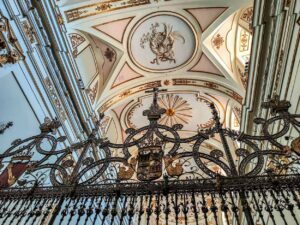
This is the experience of visiting the El Paular Monastery
At present you can visit the Paular Monastery in the guided tours carried out by the Benedictine monks, of which currently only eleven members remain.
While You can visit the cloister on your own with an audio guide, the greatest artistic interest of the monastery is found in the monastic area What are you going to do in the guided group tour.
This visit, which lasts an hour and a half, begins in the iglesia, and then go through the Chapter Room, Sanctuary, Refectory and Cloister.
ORGANIZE your TRIP
- Don't forget your TRAVEL INSURANCE with a 5% discount
- Book the HOTEL for your trip
- RENT a CAR for your trip
- The best TOURS and EXCURSIONS in Spanish
- NO-LINE TICKETS for museums and monuments
- Best FREE TOURS around the world
- Book your TRANSFER from the airport
- eSIM card with INTERNET at the best price
Most important artistic corners of the El Paular Monastery
Specifically, they are three artistic corners that will surprise you and will more than justify their excursion to visit the Paular Monastery.
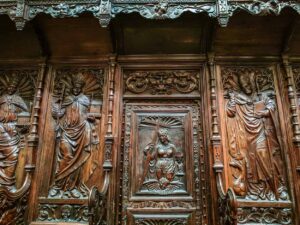
I mean the alabaster altarpiece from the period of the Catholic kings which is located in the church, the spectacular artistic corner of the Sanctuary, and the great cloister with the collection of paintings by Vicente Carducho.
Choir stalls of the El Paular church
As soon as you enter the interior of the church, you will see that it has a single nave occupied entirely by the choir stalls, since only monks could access it.
In the foreground you will see a large 15th century fence, which delimits the choir area occupied by the monks.
La large walnut wood chairs It was carved in the 16th century by the same artist who made the stalls in the church of the Parral Monastery in Segovia.
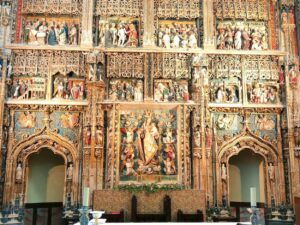
Said stalls were moved in 1883 to the Basilica of Saint Francis the Great of Madrid, and was replaced The Paular 2003 the year.
On the different lecterns you will see reliefs in which the history of the king David.
Alabaster altarpiece from the 15th century in the Monastery of El Paular
As I mentioned, what will really impress you in your church visit is polychrome alabaster altarpiece from the 15th century, which was made in Genoa and shows 17 biblical scenes.
It has recently been cleaned and is perfectly preserved with its original polychrome.
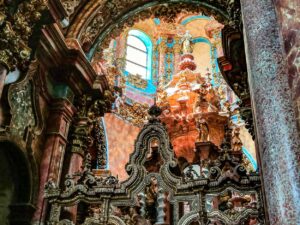
Without a doubt, one of the best artistic works what you can see in the Region of Madrid.
The visit will continue through Chapter Room, where you can see a 18th century wooden altarpiece.
Tabernacle, baroque jewel of the El Paular Monastery
And after passing through a small door, you will find yourself facing a truly spectacular scene, that of the Sanctuary.
Is one of the most important baroque ensembles in Spain Made by Andalusian artists with all types of noble materials, although original paintings and altarpieces are missing.
Among all the elements, one stands out 15 meter high marble monstrance, although the original custody was made of gold and silver, but it was looted by the French.
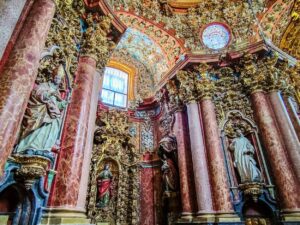
The Tabernacle It was restored 30 years ago and now you can see wooden altarpieces covered with the highest quality gold leaf.
The visit continues passing through the 15th century refectory in Gothic style, the place where the monks gathered to eat, where a Gothic Mudejar style pulpit of said century.
The visit with the monk who serves as our guide ends in the space known as the cloister, a little baroque style cloister in which they are available Talavera ceramics.
Cartujana Series by Vicente Carducho in El Paular
You will now complete your free visit to the El Paular Monastery touring the large cloister on whose walls the 56 paintings by Vicente Carducho.
Don't forget your Travel Insurance
Are you organizing your trip or getaway? Don't leave without take out your travel insurance before, and here we explain why. If you hire it with us, you have a 5% discount
Known as the Carthusian series, these paintings were made by the contemporary artist of Velázquez between 1626 and 1632.
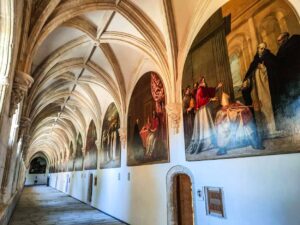
This collection of large paintings represents the life of Saint Bruno of Cologne, founder of the Order of the Carthusiansas well as a history of this religious order.
When the monastery was abandoned after the Disentailment In 1835, these paintings were moved to the Trinity Museum in Madrid.
Later, after its integration into the Museo del Prado, the paintings were deposited in various Spanish museums and institutions, where they were preserved between the years 1896 and 1946.
It was in 2001 when the Museo del Prado began its recovery process, which was concluded in 2006, and from then on we can see them in their original location in the cloister of the El Paular Monastery.
Visiting hours of the El Paular Monastery
The visits to the El Paular Monastery, as we have mentioned, are carried out with guided tours whose schedules vary according to the times of the year and days of the week, and last an hour and a quarter.
As a reference, in the summer season visits are at 12, 12,30:17,30 and XNUMX:XNUMX p.m.
Here you can check the Updated information on visiting hours of the El Paular Monastery.
El Paular Monastery entrance prices
The ticket prices They are, generally, 7 euros; seniors+65 and people with disabilities, 4 euros; children, 3 euros.


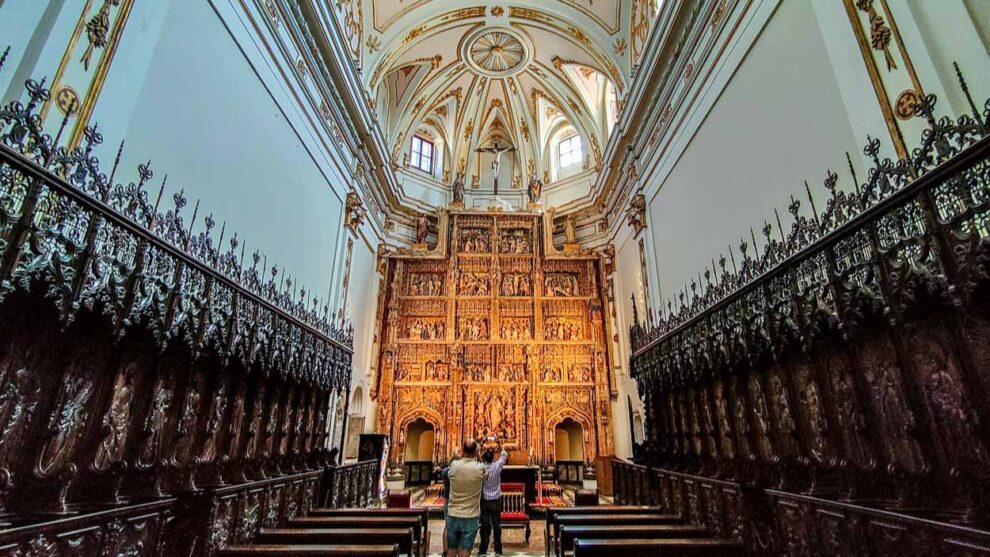

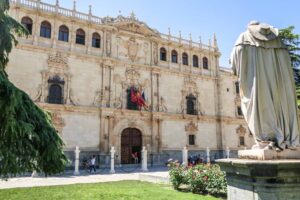












Comment